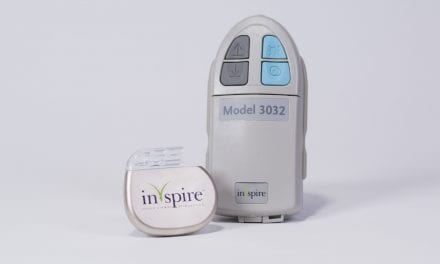Patients implanted with the ImThera aura6000 hypoglossal nerve neurostimulation device for treating obstructive sleep apnea (OSA) showed a reduced apnea/hypopnea index (AHI) and improvements in oxygen desaturation index (ODI), according to information released by ImThera.
For the study, 10 patients have been surgically implanted with the device. The target population for ImThera’s neurostimulation device, which is not available in the United States, is moderate and severe OSA patients who are noncompliant with or cannot tolerate continuous positive airway pressure (CPAP).
ImThera is releasing information on data from six patients who have had their calibrations and multiple polysomnography (PSG) studies to date. These patients have used the Targeted Hypoglossal Neurostimulation (THN) Sleep Therapy at home for 3 months or longer. Four additional patients were implanted in September and their results will be reported at a later date.
The six patients vary in age, body mass index (BMI), and OSA severity. All patients had a baseline AHI of 30 or greater (range 32 to 80). Patients’ ODI had a range of 12 to 76. The primary objectives of the European Clinical Study conducted at the Université Catholique de Louvain, Belgium, were safety, 50% or better reduction in the AHI, and 50% or better improvement in the ODI.
The interim data indicates that AHI has been reduced by an average of 73% and ODI has improved by an average of 77%. On average, arousals have been reduced by 50%.
“These early results are very promising,” said Professor Daniel Rodenstein of the Université Catholique de Louvain, and principal investigator of the European clinical study. “We have seen a significant reduction in sleep related disordered breathing (decreases in apneas and hypopneas), resulting in much higher oxygen levels during sleep, and in better sleep characteristics. In addition, [patients] appreciate the freedom the system gives them during sleep compared to the constraints of CPAP. We are confidently awaiting final data towards the end of 2010, when we plan to report our findings.”



